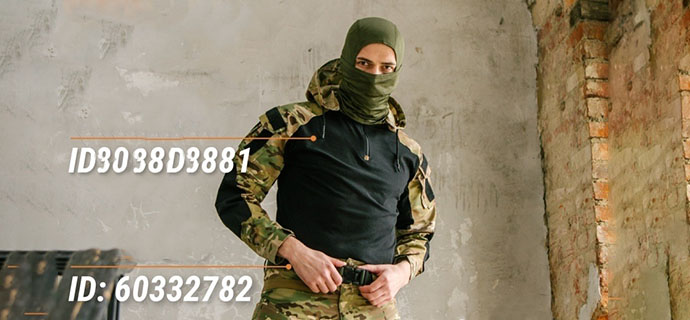When gearing up for cold-weather outdoor activities, protecting your face from the harsh elements becomes essential. Two of the most common face coverings for these conditions are Balaclavas and ski masks. While they may appear similar at first glance, they each serve distinct purposes, are made from different materials, and have different design features. In this blog post, we’ll break down the key differences between a Balaclava and a ski mask to help you make an informed decision for your next winter adventure.
What is a Balaclava?
A Balaclava is a form-fitting head covering that offers full-face protection from the elements, such as wind, snow, and cold. Named after the Battle of Balaclava during the Crimean War, where soldiers used similar coverings to protect themselves from freezing temperatures, balaclavas have become a staple for modern outdoor enthusiasts, motorcyclists, and even military personnel.
Design and Structure
The balaclava is designed to cover the entire head, neck, and sometimes part of the shoulders, leaving just the eyes, nose, or mouth exposed. Some designs allow for more flexibility, where the face opening can be pulled down to expose the full face, or cover only the nose and mouth, depending on the situation.
Materials
Balaclavas come in a variety of materials, including:
Fleece: A soft, warm material often used for winter balaclavas.
Merino wool: Known for its natural moisture-wicking and insulating properties.
Synthetic fibers (like polyester and spandex blends): Lightweight, stretchy, and ideal for moisture management during activities like skiing, snowboarding, or running.
These different materials make the balaclava versatile, allowing it to be used in different seasons and for various activities.
Use Cases
Outdoor sports: A balaclava offers protection for those who participate in skiing, snowboarding, mountaineering, or cycling in cold weather.
Motorcycling: For motorcyclists, a balaclava adds an extra layer of warmth and protection from wind burn when worn under a helmet.
Tactical use: Balaclavas are often worn by law enforcement and military personnel for protection, camouflage, or anonymity.

What is a Ski Mask?
A ski mask, as the name suggests, is primarily designed for use while skiing or snowboarding. Its primary function is to protect the face from wind, snow, and cold during winter sports. However, it’s worth noting that the term “ski mask” is often used interchangeably with “balaclava,” even though the two have different designs and purposes.
Design and Structure
Ski masks are typically more minimalist compared to balaclavas. They usually cover the top part of the head and leave larger openings for the face, such as around the mouth and eyes. Some ski masks cover just the nose, mouth, and neck, providing less overall coverage than a full balaclava.
The primary focus of a ski mask is insulation without restricting airflow or vision. The design often makes it easy for skiers or snowboarders to adjust their mask to prevent goggles from fogging or to accommodate breathing more freely during strenuous physical activity.
Materials
Ski masks are typically made from materials that strike a balance between warmth and breathability:
Neoprene: A stretchy, water-resistant material that provides warmth and protection from wind, often used in masks designed for extreme cold or wet conditions.
Polyester blends: Lightweight and moisture-wicking, polyester blends are common in ski masks for their breathability.
Fleece lining: Some ski masks include fleece lining to provide additional warmth while maintaining a lightweight structure.
Use Cases
Winter sports: Ski masks are tailored for skiing, snowboarding, and other cold-weather outdoor activities that require protection but also freedom of movement and breathability.
Everyday winter wear: Some people wear ski masks for activities like shoveling snow or taking a walk during cold days, as they offer a less constrictive and easier-to-wear alternative to balaclavas.
Key Differences Between a Balaclava and a Ski Mask
Now that we’ve covered the basics of both, let’s break down the key differences:
Coverage and Protection
1. A balaclava offers full-face, neck, and sometimes shoulder coverage, making it more suited for extreme conditions where full protection is necessary.
2. A ski mask typically covers less of the face, often leaving the eyes, nose, and mouth exposed, allowing for greater airflow during physically demanding activities.
Design Flexibility
1. Balaclavas are generally more versatile. The wearer can adjust how much of their face is covered, pulling down the face portion or even adjusting the neck area to balance warmth and breathability.
2. Ski masks have a more fixed design, often optimized for quick adjustments while wearing goggles or helmets.
Materials
1. Balaclavas come in a broader range of materials like merino wool, fleece, and spandex blends, making them suitable for varied conditions and activities.
2. Ski masks focus on lighter, breathable materials such as polyester and neoprene, designed for sports that require mobility and moisture control.
Purpose
1. A balaclava’s purpose is broader, making it ideal for tactical, industrial, or recreational use in extreme environments.
2. A ski mask is typically more sport-specific, focusing on winter sports or activities where face protection is needed but not as comprehensive as a balaclava.
Which Should You Choose?
Your choice between a balaclava and a ski mask will depend largely on your needs:
1. If you're engaging in high-intensity activities like skiing or snowboarding, where breathability is key, a ski mask might be the better option.
2. If you're looking for all-around protection in extremely cold or windy conditions, especially for extended periods outdoors, a balaclava is likely the better choice.
Both are excellent options for keeping warm during the winter, but knowing the differences can help you choose the one that best suits your activities and comfort preferences.

















